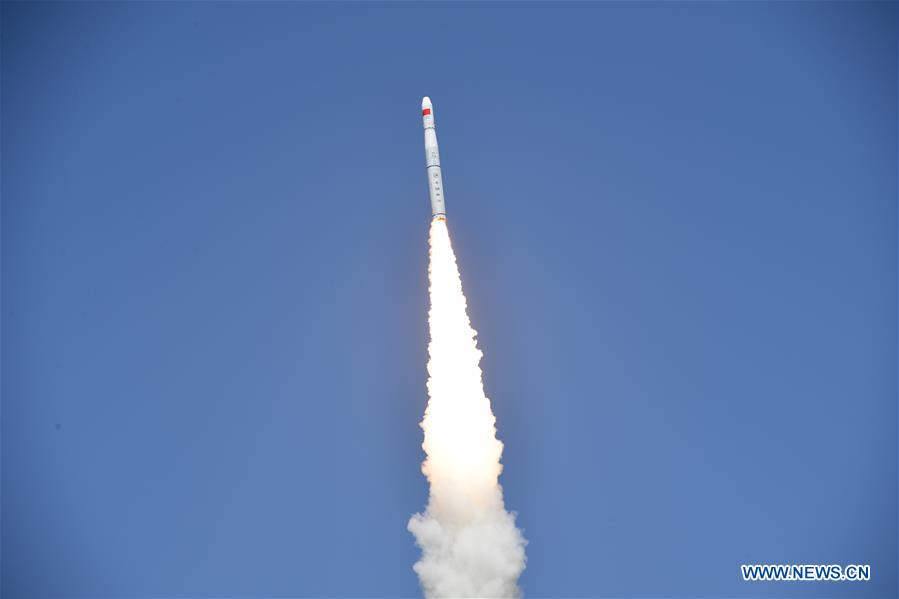
File photo taken on Aug. 9, 2017, shows the Five-hundred-meter Aperture Spherical Radio Telescope (FAST) in Pingtang County, southwest China's Guizhou Province.
A separate study based on the Fermi Large Area Telescope (LAT) observations has confirmed a radio millisecond pulsar discovered by China's Five-hundred-meter Aperture Spherical radio Telescope (FAST).
FAST, the world's largest single-dish radio telescope launched in 2016, has discovered more than 20 new pulsars so far.
The millisecond pulsar discovery was made by FAST on Feb. 27 and confirmed by the Fermi-LAT team in reprocessing of Fermi data on April 18, which was a step closer to detecting low-frequency gravitational waves, the Chinese Academy of Sciences said Friday.
The newly discovered pulsar, now named PSR J0318+0253, is confirmed to be isolated through timing of gamma-ray pulsations, making it the first result from the FAST-LAT collaboration outlined in a Memorandum of Understanding signed between a FAST team and an Fermi-LAT team.
"This discovery demonstrated the great potential of FAST in pulsar searching, highlighting the vitality of the large aperture radio telescope in the new era," said Li Kejia, a scientist at the Kavli Institute for Astronomy and Astrophysics at Peking University.
According to researchers, radio follow-up of Fermi-LAT unassociated sources is an effective way to find new pulsars.
In a one-hour tracking observation with the FAST ultra-wide band receiver, the pulsar's radio pulses were detected with a spin period of 5.19 milliseconds, an estimated distance of about 4,000 light-years, making it potentially one of the faintest radio millisecond pulsars (MSPs).
MSPs are a special kind of neutron stars that rotate hundreds of times per second. It can play an important role in understanding the evolution of neutron stars and the equation of state for condensed matter.
Also, it can be used to detect low-frequency gravitational waves. The pulsar timing array (PTA) is being built to detect low-frequency gravitational waves from merging supermassive black holes using the long-term timing of a set of stable MSPs. Therefore, pulsar search is the basis of gravitational wave detection through PTAs.
The planned Commensal Radio Astronomy FAST Survey is expected to discover many MSPs and thus will make significant contribution to the PTA experiment.
"The international radio-astronomy community is excited about the amazing FAST telescope, already showing its power in these discoveries," said George Hobbs, a scientist of the Commonwealth Scientific and Industrial Research Organization of Australia and a member of the Gravitational Wave International Committee.
"FAST will soon discover a large number of millisecond pulsars and I am looking forward to seeing FAST's contribution to gravitational wave detection," said Hobbs.


















































